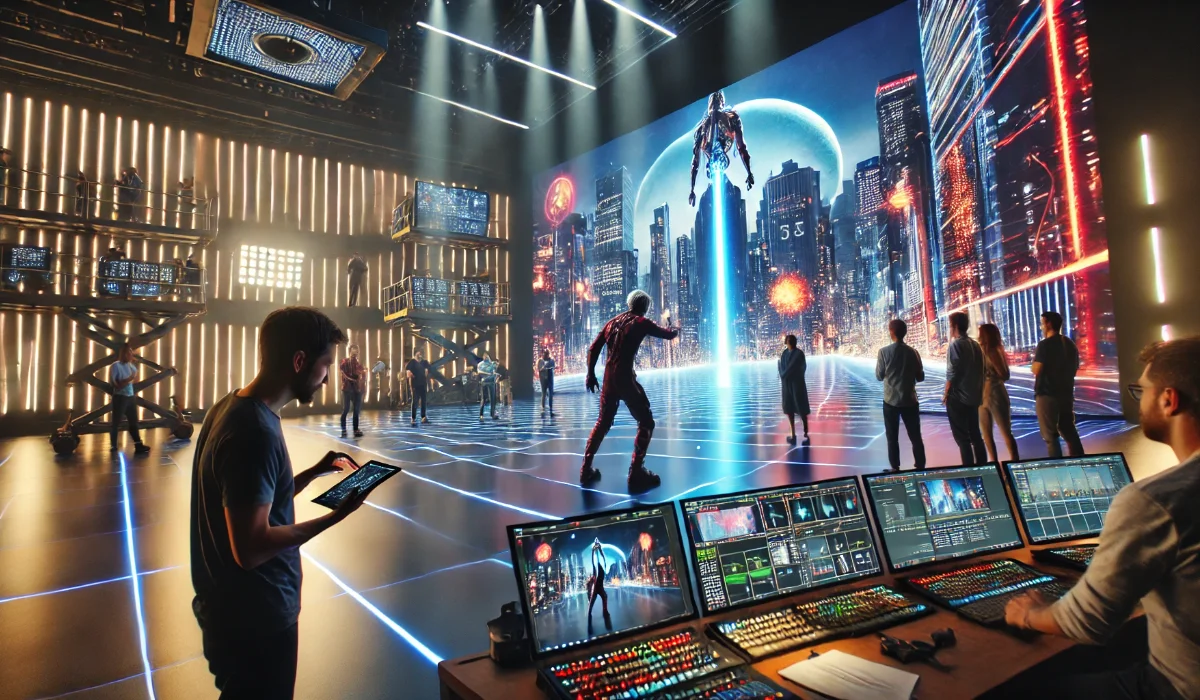In today’s fast-paced technological world, the concept of rendimension is emerging as a revolutionary approach to digital transformation. This innovative concept integrates data visualization, simulation, and advanced computing to create immersive digital environments. As businesses and industries continue to adopt new technologies to enhance their operations, rendimension is paving the way for more advanced, efficient, and interactive systems.
What is Rendimension?
Rendimension represents the next stage in digital rendering, merging cutting-edge graphics with real-time data interaction. It can be viewed as an evolution in 3D modeling, augmented reality (AR), and virtual reality (VR). Unlike traditional rendering methods that produce static images or videos, rendimension enables dynamic simulations with real-time adjustments.
At its core, rendimension utilizes powerful computational techniques to transform data into visual formats that can be instantly manipulated and interacted with. This opens up vast opportunities across various sectors such as gaming, healthcare, and engineering.
Key Features of Rendimension Technology
-
Real-Time Interaction: One of the standout features of rendimension is its ability to facilitate real-time interaction with 3D environments. Users can instantly manipulate objects or data points within the environment, making it ideal for applications that require immediate feedback, such as simulations or virtual testing.
-
High-Quality Visuals: Rendimension uses high-definition graphics to deliver hyper-realistic visualizations. Advanced rendering techniques allow the system to create environments that feel as lifelike as the real world, enhancing experiences in gaming, education, and professional simulations.
-
Dynamic Data Integration: Beyond just visual representations, rendimension allows for the integration of live data. For instance, in manufacturing, real-time performance data from machinery can be incorporated into a 3D model of the factory floor, boosting decision-making and optimization.
-
Multi-Platform Support: A key strength of rendimension is its versatility. It works across multiple platforms, from PC and console gaming to mobile devices and AR glasses, making it a flexible tool for a wide range of users and industries.
Applications of Rendimension
-
Gaming and Entertainment: In gaming, rendimension has redefined how virtual worlds are created and experienced. By enabling real-time adjustments and dynamic environments, it offers interactive and immersive settings that were previously unattainable, allowing players to engage in worlds that evolve based on their actions.
-
Healthcare and Medicine: In the medical field, rendimension is utilized to visualize intricate surgeries, treatments, and anatomical structures in 3D. Surgeons can interact with 3D models of a patient’s body to practice procedures or plan surgeries with exceptional precision, reducing errors and improving patient outcomes.
-
Engineering and Architecture: Rendimension is reshaping engineering and architecture by enabling professionals to design and test prototypes before physical construction begins. Architects can create 3D models of buildings, while engineers can simulate structural behavior under various conditions, streamlining the design process and saving both time and resources.
-
Education and Training: Educational institutions are leveraging rendimension technology to create immersive, interactive learning environments. Students can better grasp complex topics by exploring subjects like history or science in 3D, thereby enhancing learning retention through hands-on experiences.
-
Retail and E-Commerce: Rendimension improves the retail experience by allowing customers to virtually place products in their homes before making a purchase. Whether using AR glasses or mobile apps, shoppers can visualize furniture, clothing, or other items in their spaces, making more informed decisions and reducing returns.
How Rendimension is Changing Industries
The impact of rendimension across industries is profound. As businesses adopt rendimension, the way they interact with digital data is shifting from static visualization to dynamic, real-time engagement, leading to faster and better decision-making.
In logistics, for instance, rendimension can map supply chain networks and display the real-time movement of goods. Businesses can pinpoint bottlenecks or inefficiencies, enabling faster delivery times.
In manufacturing, companies are using rendimension to create virtual product prototypes and test them in simulated environments. This allows designers to identify flaws before production begins, reducing waste and costs. Additionally, 3D models of machinery performance can optimize maintenance schedules and enhance operational efficiency.
Challenges in Implementing Rendimension Technology
Although the advantages of rendimension are significant, its widespread adoption faces several challenges. The high cost of implementation is one of the most prominent barriers. Developing high-quality rendimension systems requires significant investment in hardware and software, and businesses may need to upgrade their infrastructure to meet these technological demands.
Another challenge is data privacy and security. Since rendimension often incorporates live data, protecting sensitive information becomes crucial. Data breaches could have serious consequences, especially in sectors like healthcare or finance.
Additionally, the complexity of the technology could hinder its adoption. Users must be trained to navigate rendimension environments, which could be a challenge in industries where the technology has not yet been fully integrated.
The Future of Rendimension
Looking ahead, the potential of rendimension is vast. As hardware capabilities continue to improve and costs decrease, rendimension technology will likely become more accessible across different industries. Furthermore, advancements in AI and machine learning will enhance rendimension systems, making them more intuitive and capable of handling complex tasks.
In the future, rendimension could become an integral part of daily life. As AR and VR technologies continue to develop, rendimension may be utilized in areas ranging from home entertainment to virtual tourism, creating immersive digital experiences that seamlessly blend with the physical world.
Conclusion
Rendimension marks a significant leap forward in digital innovation. By combining real-time interaction, high-quality graphics, and dynamic data integration, it has the potential to revolutionize various industries. Despite challenges related to cost, privacy, and complexity, the future of rendimension is bright. As technology continues to evolve, rendimension will likely transform how we interact with digital environments and make data-driven decisions.
